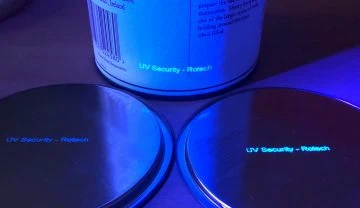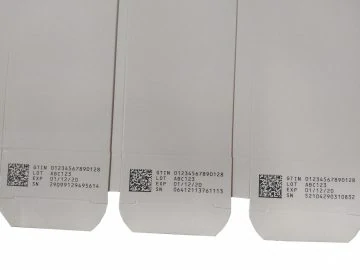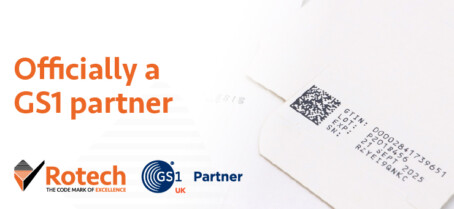Technologies
Thermal inkjet technology (TIJ) allows for a high-resolution code or mark to be produced at high speed with every print differing from the last, either by using a simple counter or by reference to a database. Giving a document a unique, often sequential number, can definitely improve its security, but there are other options available to users of TIJ printers.
Two-dimensional (2D) barcoding is well established as a method to encrypt a large number of characters in a small area and the typical barcode size of 11 x 11mm using a 22×22 pixel matrix with a pixel (module) size of 0.5mm can handle well over 50 characters, depending on type (alpha or numerical). A database link allows for a unique barcode to be printed on every item and, the addition of this code forms the basis of coding within the Falsified Medicines Directive.
Use of very small, discreet fonts – possibly in a different colour ink can also help to disguise a security code and both are achievable with a thermal inkjet printer.
For instances where a mark which cannot be seen by the naked eye is required, an ultraviolet print offers an ideal solution. You simply swap the usual black (or colour) cartridge for a UV one and you’re able to print the same range of text, logos and even barcodes – all of which can be seen with good fluorescence when exposed to an UV light source.
Use of such technology, particularly when combined with standard batch/date coding provides companies with an enhanced level of security for their products and/or packaging – particularly useful for those that operate in industries were counterfeiting is a huge problem, such as cosmetics or pharmaceuticals.







